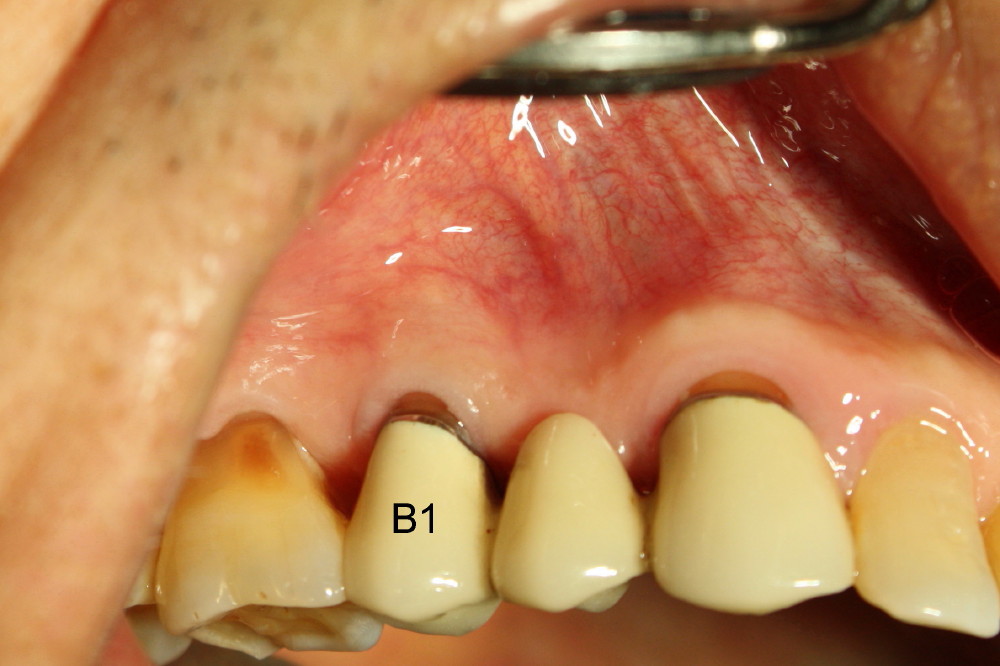



 |
 |
| Fig.1 | Fig.2 |
|
|
 |
| Fig.3 | Fig.4 |
 |
|
| Fig.5 |
Dental Education Lecture: Abscess: Bridge Complication
One year ago, we discussed that Mr. Tong has one lower front bridge, which causes wear and tear of upper front natural teeth. We also discussed the possibility that grinding natural teeth small for bridge makes them (exactly, their nerve inside the tooth/teeth) easy to die in the future. At that time, we did not know that this would happen to him.`
Recently he returns for cleaning. The exam shows that one of the supporting teeth of the upper right bridge (B1, Fig.1) has an abscess (arrowhead). Cold test demonstrates that this tooth (nerve) is dead. When we insert a rubber-like material (* in Fig.2) into the abscess, the point of the material (red arrowhead) points to shadow of the root tip (black arrowheads, suggesting infection there). In brief, several years after making a bridge (B1 to B3), one of the supporting teeth (B1) is dead and causes root tip infection. Dr. Bilal Khan (endodontist) finishes root canal treatment (R in Fig.3) to clear up the abscess (arrowhead). We expect that Mr. Tong recovers quickly. In fact, the patient has had no pain for two years. The sign of root tip abscess reduces a lot from X-ray film (Fig.4, as compared to Fig.2). The abscess has not come back for two and a half years (Fig.5, compare to Fig.1). But if he had chosen implant instead of bridge in the first place, the abscess would not had occurred.
Xin Wei, DDS, PhD, MS 1st edition 11/08/2010, last revision 06/29/2013